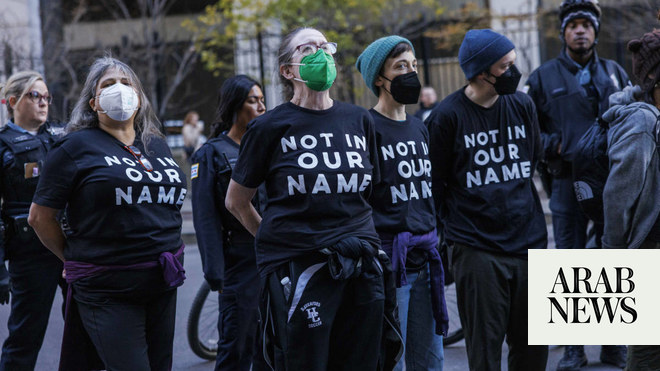
Anti-government protesters burned an Iranian consulate in southern Iraq for a third time on Tuesday, as the country’s political leaders continued talks over selecting a new prime minister following weeks of widespread unrest.
Five rockets landed inside Ain al-Asad airbase, a sprawling complex in Western Anbar which hosts US forces, without causing any casualties and little damage, said a statement from Iraq’s security media cell on Tuesday evening. The statement gave no further details.
President Barham Salih met with Iraq’s main political blocs as a 15-day constitutional deadline to name the next prime minister nears, two Iraqi officials said.
Prime Minister Adel Abdul Madi announced his resignation on Friday.
The Sairoon bloc, led by influential cleric Moqtada al-Sadr, addressed Salih in a letter and said they gave protesters the right to support a premier of their choice.
Anti-government protesters in the city of Najaf burned tires and hurled them toward the main gate of the Iranian consulate, burning it for the third time in the span of a week. The building was empty at the time of the attack and there were no casualties, according to a police official.
The incident came after hours of tense standoff with security forces earlier Tuesday when protesters surrounded a key shrine in Najaf. Tens of demonstrators gathered around the Hakim shrine, demanding that Sadr help them enter and symbolically take control.
A few protesters and some elderly tribal sheikhs were eventually permitted to enter the shrine and inspect it.
The protesters believe the shrine is a center for Iranian intelligence operations, the police official said.
Najaf has been one of the flashpoints in the protest movement, after demonstrators torched the Iranian consulate there on November 27 and again on December 1.
The Hakim shrine has been the focus of recent violence. Three protesters were killed and 24 wounded on Saturday as security forces used live rounds to disperse them from the site. The southern city is the seat of the country’s Shiite religious authority.
At least 400 people have died since the leaderless uprising shook Iraq on October 1, with thousands of Iraqis taking to the streets in Baghdad and the predominantly Shiite southern Iraq decrying corruption, poor services, lack of jobs and calling for an end to the political system that was imposed after the 2003 US invasion.
Security forces dispersed crowds with live fire, tear gas and sonic bombs last week in Nasiriyah and Najaf, leading to heavy casualties and drawing condemnation from Washington and the United Nations.
In an address to the UN Security Council on Tuesday, top United Nations envoy to Iraq Jeanine Hennis-Plasschaert deplored the continued use of live ammunition and “non-lethal devices” like tear gas that have caused “horrific injuries or death.” She condemned what she said were “unlawful arrests and detentions” targeting anti-government demonstrators.
The UN envoy also questioned the status of the government’s earlier investigations into the use of live fire and other violence, noting that though arrest warrants had been issued, perpetrators had not been brought to account.
Assistant Secretary of State for Near East Affairs David Schenker called the killing of protesters in Nasiriyah “shocking and abhorrent,” in remarks to reporters late Monday.
“The Iraqi people are calling for genuine reform implemented by trustworthy leaders who will put Iraq’s national interests first. Without that commitment to reform, it makes little difference who the prime minister is,” he added.












